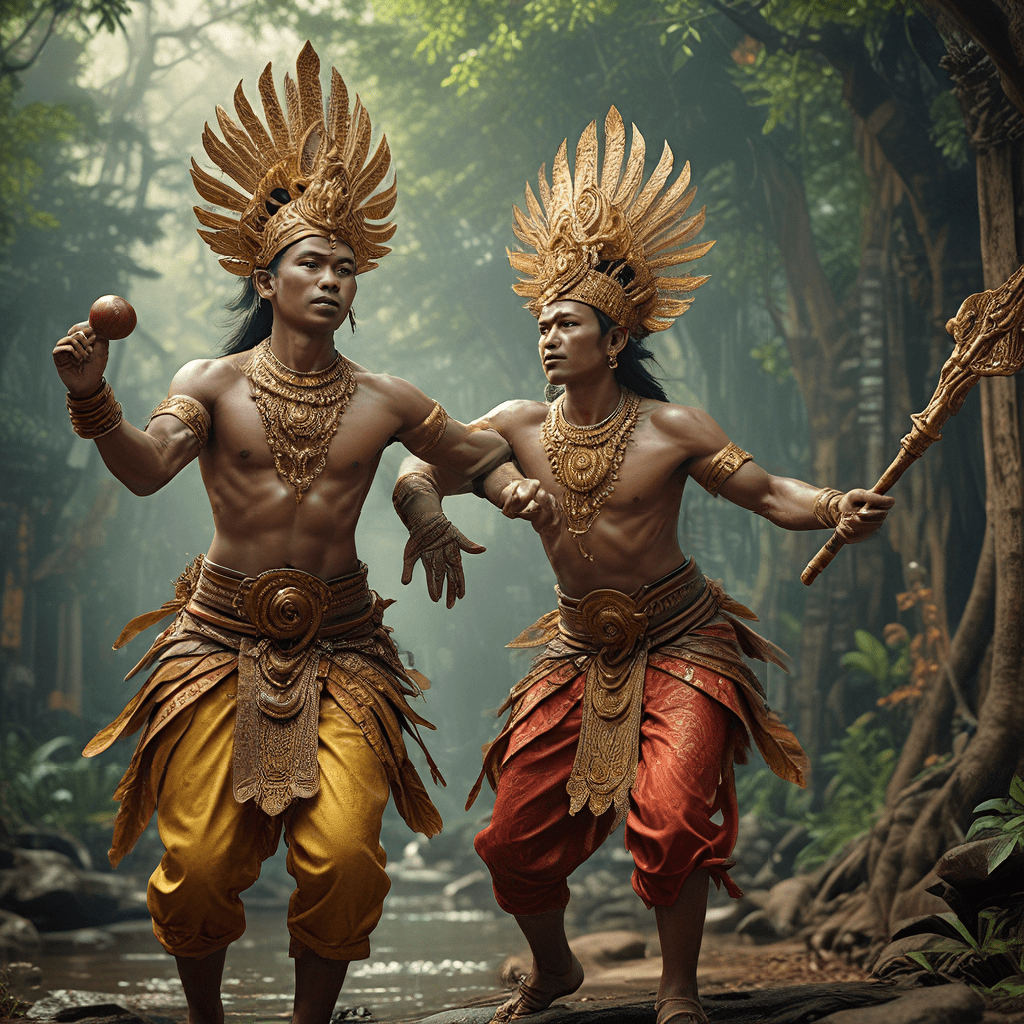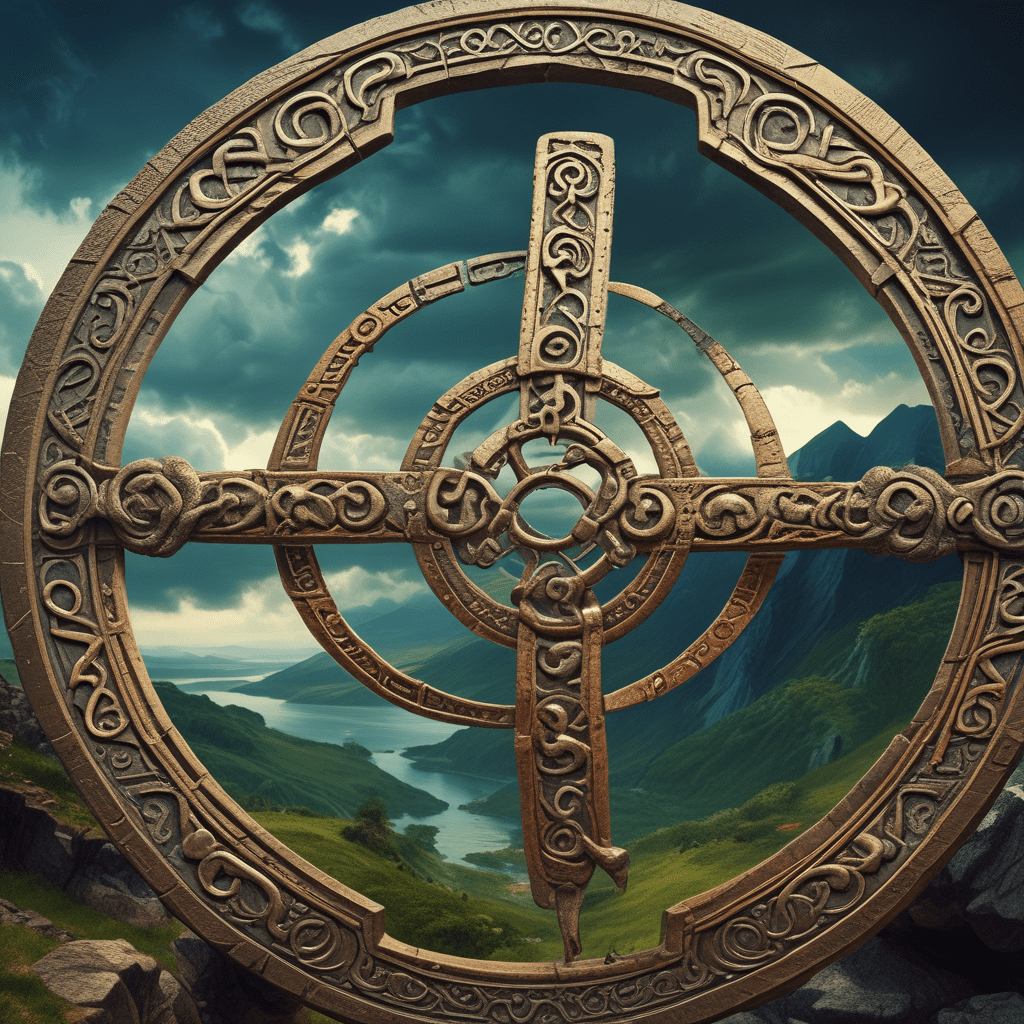Indonesian Folklore and Mythology: A Tapestry of Mythical Tales
Indonesia, an archipelago nation with thousands of islands, boasts a rich and vibrant tapestry of folklore and mythology. These stories, passed down through generations, offer a captivating glimpse into the beliefs, values, and cultural heritage of the Indonesian people. From tales of creation and the origins of the universe to stories of mythical creatures and heroic deeds, Indonesian myths provide a window into the diverse and fascinating world of Indonesian culture.
The Tapestry of Indonesian Myths: A Diverse Landscape
Indonesian mythology is as diverse as the archipelago itself. Each region, island, and ethnic group has its own unique collection of myths, legends, and folktales. This rich tapestry of stories reflects the diverse cultural heritage of Indonesia, shaped by centuries of interactions between indigenous traditions and the influence of Hinduism, Buddhism, and Islam. These influences have interwoven themselves into the fabric of Indonesian folklore, creating a complex and fascinating array of narratives.
Origin Myths: Shaping the Indonesian Worldview
Origin myths play a crucial role in shaping the Indonesian worldview. These stories address fundamental questions about the creation of the universe, the origins of humanity, and the relationship between humans and the divine. For example, the myth of Batara Guru, the supreme creator god in Balinese mythology, describes the creation of the world through a cosmic egg. Another prominent creation myth, found in the Sundanese tradition, tells the story of Sang Hyang Tunggal, the supreme deity who created the universe from a single seed. These myths not only offer explanations for the origins of the world but also establish the foundations for ethical and social values.
The Gods and Goddesses: Celestial Beings and Their Roles
Indonesian mythology is populated by a rich pantheon of gods and goddesses, each with their own unique characteristics and roles. These celestial beings represent various aspects of nature, human emotions, and social structures. For instance, Batara Guru, the supreme deity in Balinese mythology, is often depicted as a wise and powerful ruler who embodies justice and order. Dewi Sri, the goddess of rice and fertility, is revered for her ability to ensure bountiful harvests and prosperity. The stories of these gods and goddesses offer insights into the beliefs and values of the Indonesian people and provide a framework for understanding their relationship with the divine.
Creatures of Myth and Legend: From Dragons to Spirits
Indonesian mythology is brimming with mythical creatures, each embodying specific qualities and representing different aspects of the natural world or human emotions. Dragons, known as naga, are often seen as powerful and benevolent creatures, associated with water and fertility. Spirits, or makhluk halus, are believed to inhabit the natural world, from forests and rivers to mountains and caves. These spirits are often seen as guardians of nature and can be either benevolent or malevolent, depending on how they are treated. The existence of these mythical creatures reflects the Indonesian belief in the interconnectedness of humans and nature, and their stories serve as cautionary tales, reminding people to respect the environment and its inhabitants.
Heroes and Heroines: Champions of the People
Indonesian mythology is filled with legendary heroes and heroines who embody courage, strength, and wisdom. These figures often represent the ideals and aspirations of the Indonesian people, showcasing their resilience, resourcefulness, and unwavering determination. One such hero is Gatotkaca, a powerful warrior from the epic tale of the Mahabharata, who embodies strength, loyalty, and unwavering patriotism. His story is a testament to the importance of courage and self-sacrifice in the face of adversity. Another popular heroine is Dewi Rara Jonggrang, a beautiful princess who uses her wit and cunning to outsmart the evil king Bandung Bondowoso. Her story highlights the importance of resourcefulness and determination in overcoming challenges. These heroes and heroines serve as role models for the Indonesian people, reminding them of their own potential for strength, resilience, and unwavering spirit.
The Power of Ritual and Folklore: Connecting the Past and Present
Throughout Indonesia, myths and legends are not just stories but also serve as vital components of cultural traditions and rituals. These stories are passed down through generations, often through oral storytelling, dance, music, and traditional performances. Rituals and ceremonies based on these myths are integral to Indonesian life, connecting the past with the present and reinforcing community bonds. For example, the Barong dance from Bali, which depicts the battle between good and evil, is a powerful representation of the Indonesian belief in harmony and balance. Similarly, the Wayang Kulit shadow puppet performances, which narrate epic stories like the Ramayana and Mahabharata, are a captivating way to preserve and celebrate Indonesian heritage. These rituals and performances not only entertain but also serve as a means of education, transmitting cultural values and beliefs to younger generations.
The Influence of Hinduism and Buddhism: Shaping Indonesian Mythology
While Indonesia has a rich indigenous tradition of storytelling, the arrival of Hinduism and Buddhism in the region significantly influenced the development of Indonesian mythology. These religions introduced new gods, goddesses, and narratives that blended seamlessly with existing indigenous beliefs. The epics of the Ramayana and Mahabharata, central to Hinduism, became deeply ingrained in Indonesian culture, inspiring countless myths, legends, and folktales. These stories, often adapted to local contexts, highlight the influence of Hinduism on Indonesian mythology, shaping moral values, social structures, and religious beliefs. Buddhist teachings, particularly those emphasizing compassion, karma, and rebirth, also left their mark on Indonesian mythology, influencing beliefs about the afterlife and the cycle of existence.
Theories of Myth: Explaining the Origins and Functions of Myth
Understanding the origins and functions of myths requires exploring various theories that seek to explain their development and significance. One prominent theory, known as the functionalist approach, suggests that myths serve to fulfill social needs by providing explanations for natural phenomena, establishing social order, and reinforcing cultural values. Another theory, the structuralist approach, focuses on the underlying structures and patterns within myths, highlighting their symbolic meanings and their role in shaping social structures and individual identities. The psychoanalytic approach, inspired by the work of Sigmund Freud, emphasizes the psychological significance of myths, suggesting that they reflect unconscious desires, fears, and anxieties. These theories provide valuable frameworks for understanding the origins and functions of myths, offering insights into their complex and multifaceted nature.
The Enduring Legacy of Indonesian Myth: From Oral Tradition to Modern Culture
Indonesian myths have endured for centuries, evolving and adapting to the changing times while retaining their core essence. Despite the influence of globalization and modernization, these stories continue to resonate with the Indonesian people, offering a sense of identity, continuity, and cultural heritage. They are woven into the fabric of Indonesian society, influencing art, literature, music, and everyday life. In contemporary Indonesian culture, myths are reinterpreted and reimagined in various forms, from popular films and television shows to contemporary art and literature. This ongoing engagement with Indonesian myths demonstrates their enduring power and relevance in the modern world, showcasing the vibrant and dynamic nature of Indonesian culture.
FAQ
Q: What are some of the most popular Indonesian myths?
A: Some of the most popular Indonesian myths include the story of Sang Hyang Tunggal, the myth of Batara Guru, the legend of Dewi Sri, the tale of Gatotkaca, and the story of Dewi Rara Jonggrang.
Q: How has Indonesian mythology been influenced by other cultures?
A: Indonesian mythology has been significantly influenced by Hinduism, Buddhism, and Islam, resulting in a rich tapestry of traditions and beliefs.
Q: How are Indonesian myths preserved and transmitted?
A: Indonesian myths are preserved and transmitted through oral storytelling, dance, music, traditional performances, and rituals.
Q: What is the significance of Indonesian myths in contemporary culture?
A: Indonesian myths continue to play a significant role in contemporary culture, influencing art, literature, music, and everyday life. They are reinterpreted and reimagined in various forms, showcasing the enduring power and relevance of these stories.
Q: Are there any resources for learning more about Indonesian mythology?
A: Several resources are available for learning more about Indonesian mythology, including books, academic journals, online articles, and documentaries. Libraries, universities, and cultural institutions offer a wealth of information on this topic.




